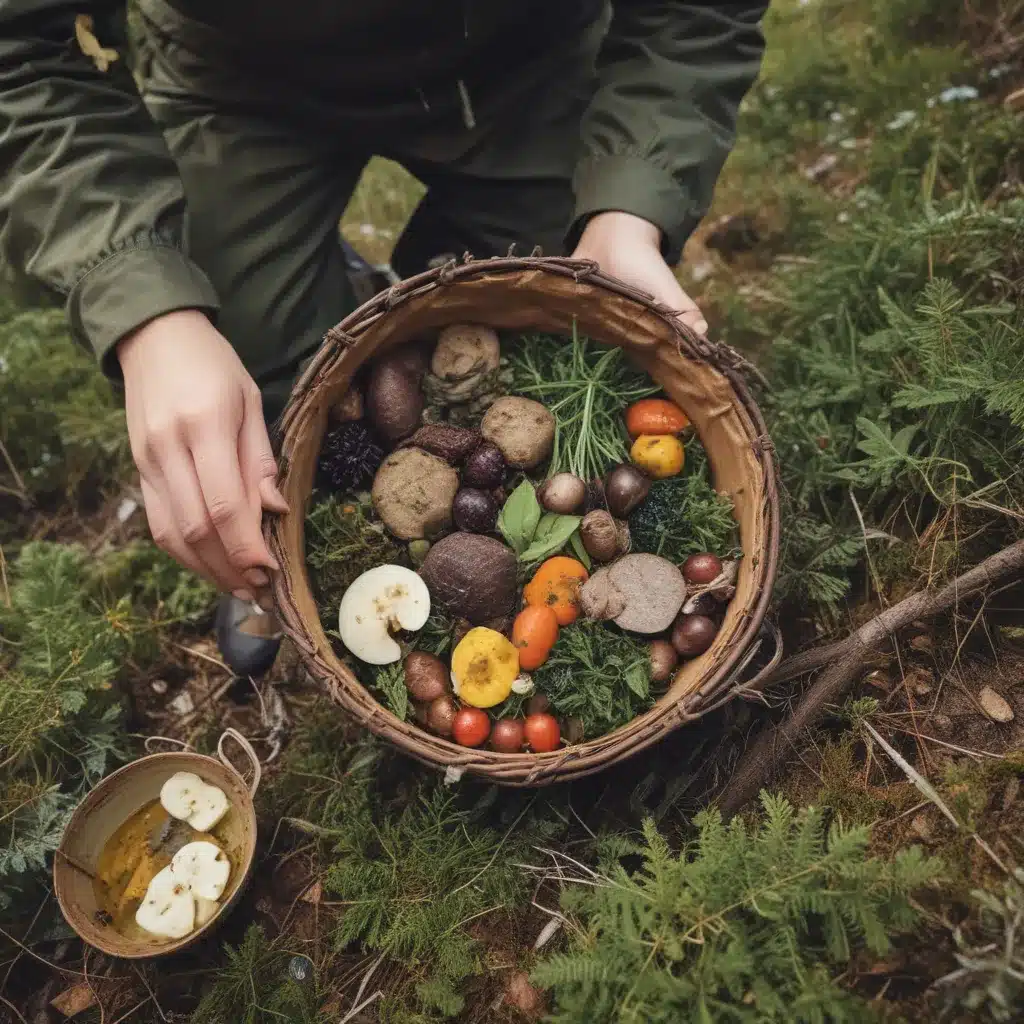
Foraging: A Lost Art
I’ll never forget the first time I went foraging in the Scottish Highlands. It was a crisp autumn day, the kind where the air is so fresh it feels like it’s cleansing your lungs with every breath. I had heard whispers of the abundance of wild edibles in these parts, but I wasn’t prepared for the sheer variety and quantity of naturally-occurring foods right under my nose.
As I meandered through the heather-clad hills and meandering streams, my senses were completely overwhelmed. The forest floor was carpeted with edible mushrooms in all shapes, sizes, and colors. Clusters of wild raspberries and blueberries hung heavy on the bushes, their jewel-toned fruits begging to be plucked. And at every turn, familiar and unfamiliar leaves, roots, and flowers revealed themselves as potential ingredients for a foraged feast.
I felt like I had been transported back in time, to an era when humans lived in harmony with the land, intimately connected to the rhythms of nature and the bounty it provided. Foraging, it seemed, was a lost art – a skill set that had been largely forgotten in our modern, convenience-driven world. But out here, in the rugged beauty of the Scottish Highlands, it was alive and well. And I was determined to rediscover it.
A Bounty of Wild Edibles
As I delved deeper into the world of foraging, I was amazed by the sheer abundance of wild edibles right at my fingertips. From the humble dandelion to the elusive chanterelle mushroom, the Highlands were teeming with nourishing and delicious plants, fungi, and berries.
One of my favorite finds was the wild garlic, or ramsons, that grew in lush clusters along the riverbanks. With their broad, glossy leaves and distinctive garlicky aroma, these plants were an absolute game-changer in the kitchen. I’d gather handfuls of the leaves, chop them up, and use them to add depth and flavor to everything from soups and stews to omelets and pasta dishes.
And then there were the wild berries – oh, the berries! Plump, juicy clusters of raspberries, blueberries, and blackberries dotted the landscape, their sweet-tart flavors bursting on my tongue. I’d spend hours foraging for these jewel-toned treasures, my fingers stained with purple, and come back to camp with buckets full of nature’s candy.
Backpacker magazine has a great overview of the top edible plants and fungi you can find in the Scottish Highlands, from the ubiquitous dandelion to the elusive and delicious chanterelle. And BearVault offers some helpful tips on how to properly identify and harvest wild edibles.
The Thrill of the Hunt
But foraging in the Highlands isn’t just about the end result – it’s about the journey, the hunt, and the sense of connection to the land. There’s something deeply satisfying about using all of your senses to track down and harvest the bounty of nature.
I’ll never forget the first time I stumbled upon a patch of wild mushrooms, their caps peeking out from the moss-covered forest floor. I crouched down, gently brushing away the leaves and debris, and ran my fingers over the smooth, firm flesh. The earthy, umami-rich scent wafted up to my nose, and I knew I had found something special.
Foraging for wild foods requires a keen eye, a curious mind, and a deep respect for the natural world. You have to learn to identify the edible plants and fungi, understand their growing patterns and seasonal availability, and handle them with care to ensure you’re not harming the ecosystem.
But the payoff is immense. There’s an unparalleled sense of satisfaction that comes from finding, harvesting, and preparing a foraged meal. It’s a connection to the land and a rediscovery of our ancestral food-gathering roots. And in a world that often feels so disconnected and fast-paced, that kind of grounding experience is truly priceless.
A Foraged Feast
As the sun began to set over the Highlands, I’d return to my campsite with my bounty of wild edibles, ready to transform them into a truly spectacular meal. Using the wild garlic, I’d whip up a simple pesto to toss with freshly boiled pasta. I’d slice the chanterelle mushrooms and sauté them in butter, finishing the dish with a sprinkle of foraged wild thyme.
And of course, no forager’s feast would be complete without a generous helping of fresh, juicy berries. I’d fold them into a rustic tart, or whip them into a tangy, vibrant coulis to drizzle over a stack of pancakes. The possibilities were endless, and every bite was a celebration of the Highlands’ natural bounty.
Urban foraging expert Joan Ransley has some great tips on how to incorporate foraged ingredients into your meals, from simple garnishes to full-fledged recipes.
As I’d sit around the campfire, savoring the fruits of my foraging labors, I’d be struck by a sense of profound gratitude. Not only for the nourishing and delicious food before me, but for the opportunity to reconnect with the land in such a deeply intimate way. In a world that often feels so disconnected from nature, foraging in the Scottish Highlands had become a transformative experience – a way to ground myself, feed my body and soul, and rediscover my place in the grand, ever-changing tapestry of the natural world.
So if you find yourself visiting Loch Ness Shores in the Scottish Highlands, I encourage you to step off the beaten path and explore the world of foraging. It just might change the way you think about food, and your place in the natural world, forever.

